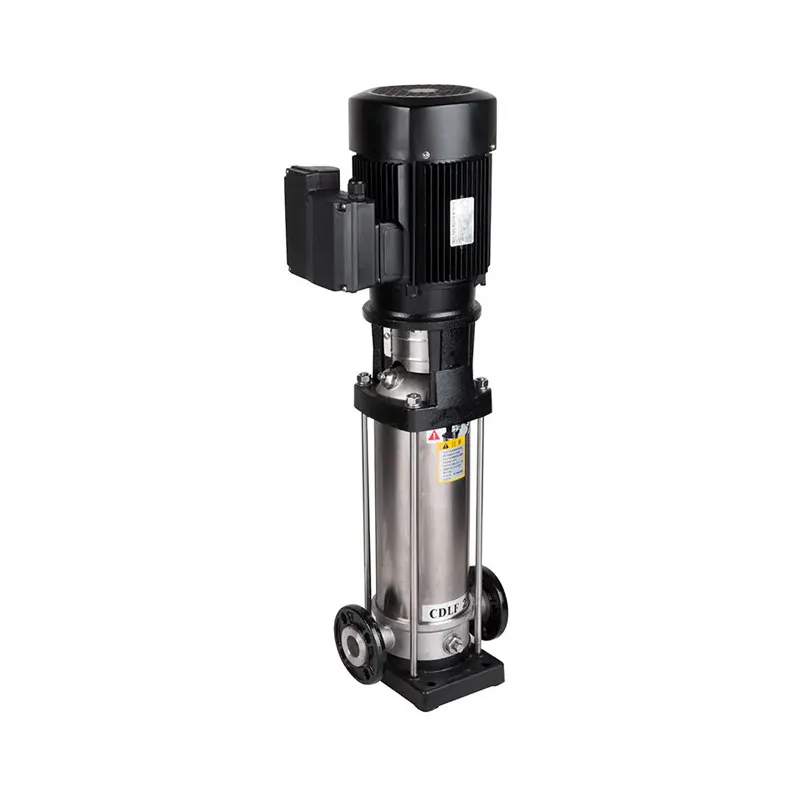What Is a Centrifugal Pump and How Does It Work?
2024-11-27
When it comes to moving liquids or slurries in various industries, centrifugal pumps are among the most commonly used and versatile types of pumps. But what exactly is a centrifugal pump, and how does it work to move liquids efficiently? In this blog, we’ll dive into the principles of centrifugal pumps, their components, and their wide range of applications in industries such as water treatment, chemical processing, and oil and gas.
What Is a Centrifugal Pump?
A centrifugal pump is a mechanical device used to move liquids or slurries through piping systems by converting rotational energy, typically from an electric motor or engine, into kinetic energy. This kinetic energy, generated by the rotation of the pump's impeller, increases the velocity of the liquid, which is then directed through the pump casing to produce flow and pressure.
Centrifugal pumps are widely used because of their simplicity, efficiency, and ability to handle a wide range of liquids, including clean water, chemicals, and even abrasive slurries. They are used in countless applications across industries, from water supply systems to manufacturing processes.
How Does a Centrifugal Pump Work?
Centrifugal pumps operate on the basic principle of centrifugal force. The impeller, which is a rotating disc-like component inside the pump, is driven by an external power source, such as an electric motor. As the impeller spins, it imparts kinetic energy to the liquid, causing the fluid to accelerate and move outward from the center of the impeller towards the outer edges.
Here's a step-by-step breakdown of how centrifugal pumps work:
1. Liquid Intake: Liquid enters the pump at the center of the impeller, through an inlet called the eye of the pump.
2. Acceleration: As the impeller rotates, the liquid is pushed radially outward due to centrifugal force, which increases its velocity.
3. Conversion of Energy: The kinetic energy of the liquid is then converted into pressure energy as the liquid flows through the pump casing. The design of the casing directs the flow of the liquid in such a way that the energy is concentrated in the form of pressure.
4. Discharge: Finally, the pressurized liquid exits the pump through the discharge nozzle and moves into the pipe system.
This process is continuous as long as the pump is operating, allowing for a constant flow of liquid or slurry through the system.
Key Components of a Centrifugal Pump
A centrifugal pump consists of several key components that work together to ensure efficient liquid transfer:
- Impeller: The heart of the centrifugal pump, the impeller is a rotating component that imparts energy to the liquid. Its design can vary depending on the specific requirements of the application.
- Casing: The pump casing encloses the impeller and directs the flow of the liquid. It is typically made from materials such as cast iron, stainless steel, or plastic, depending on the liquid being pumped.
- Suction and Discharge Ports: These are the entry and exit points for the liquid. The suction port allows the liquid to enter, while the discharge port directs the liquid out of the pump.
- Seal: The mechanical seal or gland seal prevents leakage of liquid from the pump shaft, ensuring that the fluid is contained within the pump housing.
- Motor: The motor drives the impeller, providing the mechanical energy required to rotate it. Motors can be electric, diesel, or steam-powered, depending on the application.
Types of Centrifugal Pumps
Centrifugal pumps come in different types, each suited to specific applications. Some common types include:
1. Single-Stage Centrifugal Pump: The most basic type, a single-stage centrifugal pump features only one impeller. It is suitable for applications requiring low to moderate pressure and flow rates.
2. Multi-Stage Centrifugal Pump: This type uses multiple impellers arranged in series to increase the pressure of the liquid being pumped. Multi-stage pumps are used when higher pressure is needed, such as in water distribution systems or high-lift applications.
3. End Suction Pump: In this type, the liquid enters the pump from the side (end) of the casing, making it ideal for space-constrained applications and low-pressure operations.
4. Vertical Centrifugal Pump: These pumps have a vertical shaft and are commonly used in applications where the pump needs to be installed in a confined space or where the pump is submerged in liquid.
5. Submersible Pump: A centrifugal pump that operates while fully submerged in the liquid, commonly used for applications like draining or wastewater removal.
Advantages of Centrifugal Pumps
Centrifugal pumps offer several advantages, making them the preferred choice for many industrial applications:
1. Simple Design: The design of centrifugal pumps is relatively simple and straightforward, which makes them easy to maintain and operate.
2. Versatility: Centrifugal pumps can handle a wide range of fluids, including water, chemicals, oils, and slurries, making them highly versatile across industries.
3. Continuous Flow: These pumps are capable of providing a continuous, steady flow of liquid, which is essential for processes that require constant pumping.
4. Efficiency: With proper maintenance, centrifugal pumps are very efficient and can operate for extended periods without significant wear or energy loss.
5. Cost-Effective: Centrifugal pumps are generally more affordable compared to other types of pumps, such as positive displacement pumps, especially for applications involving large volumes of liquid.
Applications of Centrifugal Pumps
Centrifugal pumps are used across a wide range of industries and applications. Some of the most common uses include:
- Water Treatment: Centrifugal pumps are crucial in water treatment plants for moving water through filtration, chemical treatment, and disinfection processes.
- Oil and Gas: These pumps are used in the oil and gas industry to transport crude oil, water, and other liquids throughout pipelines and processing systems.
- Chemical Processing: Centrifugal pumps are used to transfer various chemicals and liquids in the chemical manufacturing process.
- Agriculture: In irrigation systems, centrifugal pumps help move water to crops, ensuring consistent and efficient water supply.
- HVAC Systems: In heating, ventilation, and air conditioning systems, centrifugal pumps are used to circulate water or coolant throughout the system.
Conclusion
Centrifugal pumps are essential components in countless industries, providing a simple, efficient, and cost-effective solution for moving liquids. Understanding how these pumps work, their components, and their applications can help businesses make the most of their capabilities and improve overall operational efficiency. Whether you're managing a water treatment plant, running a chemical manufacturing process, or working in oil and gas, centrifugal pumps are an invaluable tool for ensuring smooth and reliable liquid transfer.



